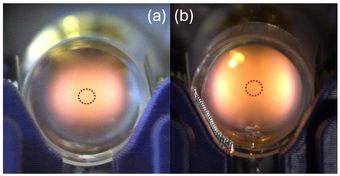Speaker
Description
Optically-pumped magnetometers (OPM) using metastable helium-4 species allow real-time, space-resolved vector measurement of magnetic fields at room temperature. Moreover, the bandwidth of this kind of sensors --up to 2 kHz-- covers the whole emission of the human brain. Hence, this technology proves very promising for magnetoencephalography (MEG) applications while minimizing patient discomfort caused by excessive heating or cooling of the sensors 1. Although the signal-to-noise ratios in field recordings already match the ones of SQUID systems [2], we continue the efforts to improve the intrinsic noise of these OPMs [3].
In this sense, we started by characterizing its sources. They include the phenomena in the plasma discharge --necessary to produce the metastable atoms-- and the noises from the laser --that optically pumps the metastable atoms. We present measurements of the noises originated from both these sources and demonstrate their respective contributions to the total intrinsic noise of the sensor. Ways for improving the signal-to-noise ratio of our technology are also discussed.

References
1 W. Fourcault et al., Optics Express 29, 14467 (2021)
[2] J.-M. Badier et al., eNeuro. 2023 Dec 22, 10(12)
[3] M. Bonnet et al., Front. Med. Technol. 7 (2025)

